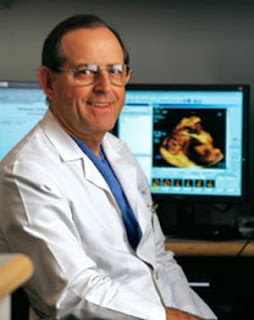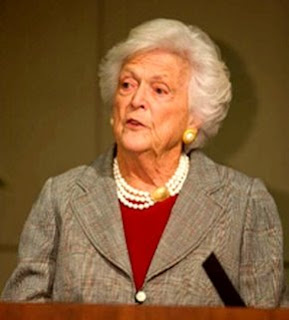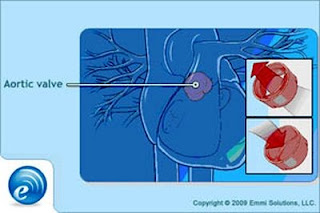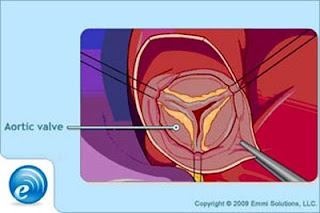Dr. Gerald Lawrie, heart surgeon at the Methodist DeBakey Heart & Vascular Center, performed the 2 ½ -hour procedure, replacing her aortic valve with a biologic valve. A hardened aortic valve needs to be replaced because, when left untreated, it can result in heart failure or sudden cardiac death.
“The surgery went extremely well and we were able to successfully replace her aortic valve,” Lawrie said. “I expect her to recover fully and soon resume her normal activities.”
The aortic valve is on the left side of the heart. It opens to allow blood to be pumped out of the heart into the body, then closes to prevent blood from flowing back into the heart.
With age, the aortic valve can harden, making it less effective. Symptoms of aortic valve disease include shortness of breath, chest pain or dizziness.
In November, Bush underwent surgery to repair a perforated ulcer. She is fully recovered from the surgery, and the two medical issues are unrelated.
We anticipate she will be discharged in 7 – 10 days.
What is the Aortic Valve?
It is important to address disease of the aortic valve, because when it becomes diseased, the heart must work much harder to pump blood into the body. If left untreated, this can result in heart failure. Unlike other heart valves, the diseased aortic valve must usually be replaced rather than repaired.
What is Aortic Valve Replacement?
In aortic valve replacement, the damaged aortic valve is replaced with either a mechanical valve or biologic valve. A biologic valve is made from natural living tissue. Natural tissue valves are less likely to cause blood clots than mechanical valves. Sometimes mechanical valves are needed with the patient’s aorta is very small. Mechanical valves provide better flow than biologic valves in very small sizes. Patients who receive mechanical valves need to take anticoagulation medication to prevent blood clots.
 Dr. Gerald Lawrie, heart surgeon at the Methodist DeBakey Heart & Vascular Center in Houston, performed a 2 ½-hour procedure Wednesday on former First Lady Barbara Bush. | Dr. Gerald Lawrie Dr. Gerald Lawrie, cardiothoracic surgeon at the Methodist DeBakey Heart & Vascular Center in Houston, holds the Michael E. DeBakey Chair in Cardiac Surgery at The Methodist Hospital. He is also the medical director of the Heart Valve Institute at Methodist. Lawrie is one of the world’s most experienced surgeons treating diseased cardiac valves. A pioneer in valvular surgery, Lawrie invented a technique called the American Correction, with which he has a 100 percent success rate for repair of diseased mitral valves. In 2007, Lawrie was the first to use a surgical robot to successfully repair a mitral valve using this advanced technique. |
Lawrie graduated from the University of Sydney Medical School. He continued his surgical education in the Teaching Hospitals of the University of N.S.W. in Sidney, then spent five months at the Institute of Basic Medical Sciences of the Royal College of Surgeons in London. While Lawrie was completing his residency training in thoracic and cardiovascular surgery at Teaching Hospitals, Dr. Michael E. DeBakey was a visiting professor in Sydney. DeBakey invited Lawrie to spend a year with him in Houston.
Between 1974 and 1975, Lawrie completed a cardiovascular fellowship at The Methodist Hospital in Houston with DeBakey. After the fellowship, Lawrie was invited to join DeBakey’s personal staff as an associate surgeon. In this capacity he worked with DeBakey on a daily basis for over 20 years.
Over the course of his career, Lawrie has trained thousands of surgeons on advancements in the repair of cardiac valves and treatment of complications associated with valvular disease. He has more than 250 publications in respected medical journals.
Lawrie also has been actively involved in the development of The Methodist Hospital’s new surgical skills training facility called the Methodist Institute for Technology, Innovation and Education (MITIE™), a virtual hospital and high-tech environment that incorporates imaging, robotics and simulation to enable surgeons and their teams to master new skills. Surgeons come from across the world to watch Lawrie perform surgery with the robot in the operating room.
Media Contacts: Gale Smith Phone: 281-627-0439 Pager: 713-768-1745 gsmith@tmhs.org














No comments:
Post a Comment